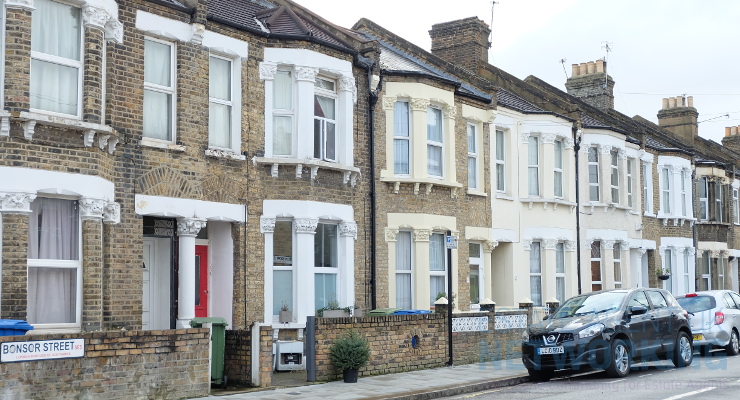WEEKLY NEWS ROUNDUP – 08/07/2022
A roundup of the week’s top property and proptech news stories in partnership with Proptech-X
Growth in Prime Central London continues steady recovery but is held back by stalled return of international demand

Growth in prime central London reached +0.7% on the quarter and +3.3% on the year, the highest annual growth seen since September 2014 However, recovery has been held back due to stalled return of foreign investors and the war on Ukraine Houses continue to outperform flats on an annual basis – but the gap between the two is narrowing Lack of stock continues to have a significant impact on the market, according to Savills agent survey (45% in prime central London agree and 42% in outer London), ahead of rising interest rates and the increased cost of living Rising interest rates to have biggest impact on South West and West London family house markets where levels of borrowing are higher
Prime central London prices are continuing to grow at a steady pace, but its recovery has been delayed by fewer than expected international buyers and the war on Ukraine, according to the latest prime London sales index (Q2) from property advisor Savills.
Growth totalled just +0.7% on the quarter – and is up +3.3% on the year. This is the highest annual growth seen since September 2014.
“As London continues its return to normality, central London values have continued to recover over the past three months, after being in the doldrums for much of the pandemic. However, prices in prime central London are still down -17.6% on their 2014 peak, meaning there is still plenty of opportunity for buyers – especially those buying in foreign currencies, given the recent improvement in currency advantage.
“But unless high net worth foreign investors return in their pre-pandemic numbers, we can expect the market to continue to recover at a slow and steady pace, rather than with a sharp uptick,” comments Frances McDonald, research analyst at Savills.
Lack of stock remains an issue, as well as slow return of international buyers
A lack of stock remains the biggest issue facing the market, cited by almost half (45%) of Savills agents in prime central London and 42% in outer London, though this is down from 64% and 68% in Q1.
“Sales at the top end of the market have been driven by domestic buyers since the start of the pandemic and remain the driving force of the market. International arrivals to the UK are still -18% lower than the same period in 2019, as a result growth is delayed by a slower than projected return to normal travel.
“The top end of the market is less reliant on borrowing, reducing its exposure to further rate rises. However it is not completely immune. The low cost of borrowing over recent years has allowed prime buyers to take out larger mortgages, particularly in the South West and West London family house markets. However, with rates still historically low, we don’t expect to see any impact in the short term, particularly given the high levels of equity across most prime locations and buyers’ propensity to lock into fixed term deals,” McDonald concluded.
Flats vs houses
Houses continued to outperform flats on an annual basis – but growth is slowing and the gap between the two is narrowing. Houses in outer prime London grew +1.2% on the quarter (down from +2% in Q1) and by +0.8% in prime central London (down from +1.2%).
Flats in both London markets grew +0.5% over the quarter but performed strongest in West London (+1%), where houses have increased in value the most during the pandemic.
“The return of workers back to the capital has been a driving force in the rebalancing between houses and flats. Even with hybrid-working becoming more conventional, workers still want to be close to the office, and the number using the tube to travel into the City hit a new post pandemic high in June at 60% of the pre-pandemic norm”, continued Frances McDonald.
“As a result of changing demand, the distribution of growth has shifted away from locations which performed best over the pandemic, to areas of London which combine strong first-time buyer, family and investor markets – as well as outside space. Notting Hill (+2.2%), Clapham (+2.1%), St Johns Wood (+2.1%) and Pimlico (+2.0%) have overtaken the likes of Wimbledon (1.4%), Chiswick (+1.0%) and Wandsworth (+1.0%).
Inflation Outpaces Home Price Growth

PRESS RELEASE: The UK property market forges ahead seemingly undeterred by economic woes and foreign conflicts, according to Home.co.uk’s Asking Price Index for June.
Demand remains high, even increasing in London and the North East. Stock levels remain very low by historic standards and consequently prices continue to rise rapidly across all regions. The supply of new instructions entering the market nudged up slightly this month as more potential vendors are tempted by record prices.
It is becoming clear that the Bank of England’s paltry efforts to tame inflation are not working. The Bank is expected to continue their impotent strategy and raise the UK benchmark rate by just a quarter point next week to 1.25%, while the purchasing power of sterling collapses. Even by their own preferred measure (CPI), inflation is now 4.5 times their target rate and climbing. Of course, the unprecedentedly large and widening spread between mortgage interest rates and inflation specifically incentivises highly leveraged property purchases.
Home prices rose significantly in every English region, Wales and Scotland during the last month. Marketing times remain very low by any historic precedent. Higher prices appear to pose no significant obstacle, as one should expect during a period of rapid monetary inflation. Such is the vim and vigour of the market that even the North East, formerly overwhelmed with stock and stagnating prices, has now entered a boom phase. Demand has decimated the stock for sale over the last year and prices are rising rapidly.
Relative scarcity persists across all regions with the average stock total dropping around 11% year-on-year. The largest falls in unsold sales stock are found in the North East (19.0%) and London (18.7%), and these trends strongly suggest further strong price growth going forward. However, the first real indications of rising supply are evident in the East of England and East Midlands where the rate of new instructions rose by 10% and 12% respectively compared to May 2021. Overall, supply across the UK is up 5% year-on-year.
Rents are up year-on-year across all regions. The mix-adjusted average rise for the UK is 18.8%. Supply is worsening in this sector too, with newly available rental properties down by 24% compared to May 2021.
The annualised mix-adjusted average asking price growth across England and Wales is now at +6.5%; in June 2021, the annualised rate of increase of home prices was 9.0%.
Headlines
- Asking prices across England and Wales surged a further 0.9% overall in May, bringing the year-on-year rise to 6.5% while inflation leapt to 13% (RPI ex. housing), according to April 2022 figures from the Office of National Statistics.
- The property market continues to outpace even last year’s blistering pace. Typical Time on Market (median) for unsold property is 60 days, which is 16 days less than in June 2021.
- Supply eases slightly as vendors are tempted by much higher prices. Five per cent more properties were placed on the market last month compared to May 2021. London, however, indicated a 4% year-on-year drop in supply.
- The total stock of property for sale in England and Wales nudged up again and passed the 250,000 mark for the first time since October last year.
- The South West property market continues to lead in annualised regional price growth (+10.0%), narrowly ahead of Wales (+9.5%).
- Rents in Greater London continue their upward spiral. High demand and falling supply of available properties to let has pushed up annualised rental growth an alarming 27.6%. The mix-adjusted average monthly rent in the capital region is now 25% higher than in pre-COVID June 2019.
- Asking rent growth across the UK currently stands at 18.8% year-on-year.
- Central London rents continue to set new records as supply plummets. Aside from the City (+51%), the greatest rises in asking rents over the last twelve months are now in Lambeth (+44%) and Hackney (+43%).
Reset of market will be gradual as demand remains robust
Interest rates have risen for the fifth time in succession as the cost-of-living crisis continues to escalate, with inflation at a 40-year high. “However,” says Nicky Stevenson, MD of Fine & Country UK, “any reset of the property market is expected to be slow and gradual as demand for property remains considerably above pre-pandemic levels.”
She adds that the housing market continues to defy the wider economic rhetoric, but signs are emerging that the market is starting to reset. “At just 0.1% in May, Hometrack report month-on-month price growth fell to its lowest rate since December 2019, while the pace of price growth for newly-marketed properties continues to slow. Nationwide report annual house price growth in June is 10.7%, the fourth month in succession of price growth moderation, while mortgage approvals in both April and May have pared back to pre-pandemic levels. With the volume of new supply to the market edging upwards and rising mortgage rates set to cause a greater degree of price sensitivity in the market in coming months, more balance is returning,” Stevenson comments.
She notes that demand for properties continues, and sales volumes continue to hold firm. “According to HMRC, when seasonally adjusted, over 109,000 sales took place in May, 12% higher than the pre-Covid average between 2015 and 2019. Over 540,000 sales have taken place in the first five months of 2022, 7% higher than the average between 2015 and 2019,” Stevenson adds.
Financial data reveals that the UK economy contracted in both April and March following zero growth in February, the first time the economy has stalled in a three-month period since the height of the pandemic. Against this backdrop, the British Chamber of Commerce (BCC) and OECD have both downgraded their forecasts for UK economic growth. The BCC now predict growth of 1.8% in 2022, down sharply from 3.5% in its previous forecast. Meanwhile, the OECD predicts growth of 3.6% in 2022, which is down from 4.7%, with zero growth in 2023, down from the previously predicted 2.1%. Although growth is still expected this year, spiralling inflation and interest rates on the rise mean that concerns over a recession are starting to mount.
Stevenson says that the Bank of England has raised the base rate of interest to 1.25% in June, the fifth rate rise in succession, as rising costs pushed inflation to a 40-year high of 9.1% in the 12 months to May. “It is predicted this could well reach 11% by October when the energy price cap is set to rise again. Although average wages continue to rise, in real terms pay is falling as pay increases are subsumed by cost of living rises. According to research by ONS, over 40% of adults are buying less food than usual as the squeeze continues,” she adds.
Stevenson notes that the long-awaited initial findings of the 2021 Census have finally been published. “Conducted on the 21st of March 2021, data from this census will provide a unique snapshot in time as people began to emerge from the third national lockdown. One of the reasons behind the consistent demand for housing is the population growth. At 59.6 million, the population of England and Wales was the largest ever recorded through a census, having grown by 3.5 million, up 6.3% since the last census in 2011. The number of households also increased by just over 6%, rising by 1.4 million to 24.8 million,” she says. “Data from the census indicates that the East of England and South West England have proportionally seen the most significant increases in population, with rises of 8.3% and 7.8% respectively. Unsurprisingly, they also top the league for household growth. By size of its population, the South East is the largest region with 9.3 million, followed by London with 8.8 million. These two regions account for 30% of the total population of England and Wales,” Stevenson concludes.
PRESS RELEASE: Summer sellers jump into action with property valuation requests highest since January

- The number of prospective sellers contacting estate agents to have their home valued is at its highest level since January, typically the first step for a seller coming to market:
- 22nd June was the fourth highest ever day for home valuation requests, and the busiest day for home valuation requests since May 2021
- The number of home valuation requests for w/c 20th June 2022 was the highest since January, and 24% higher than the same week last year
- The number of new properties coming to the market over the past two weeks is up 14% compared to the same period last year
- Being quick to respond, presenting properties professionally in advertising, and being an expert in their local market are all more important factors than the agent’s fee to sellers when choosing an agent
New data from the UK’s biggest property website Rightmove reveals signs of the stock shortage starting to ease slightly, as home-owners choose to take advantage of record asking prices and sell this summer.
The number of requests from prospective sellers for an estate agent to come out and value their home is at its highest level since the start of the year.
Home valuation requests to estate agents were at their highest in w/c 20th June since January, and 24% higher than the same week in June 2021.
Wednesday June 22nd was the fourth busiest day on record for requests to estate agents to value a home, and the highest single day for valuation requests since May 2021.
The number of new properties for sale is up by 14% over the past two weeks compared to the same two weeks last year.
The time to find a buyer is at a near-record low of 32 days, therefore agents are reporting that those with plans to buy and also a home to sell, may see more success by putting their own home on the market first before searching for their next home.
As more sellers prepare to come to market, new insights from over 2500 prospective sellers reveal current attitudes and behaviours towards the housing market.
When choosing an agent to sell their property, the findings show that prospective sellers value agents being responsive (87%), presenting their properties professionally in advertising (86%), and being knowledgeable about local markets (84%) more than having the lowest fees (32%) or providing the highest valuation (21%) for their home.
Tim Bannister, Rightmove’s Director of Property Science comments: “In recent months, we have reported a slight easing of the market and the pace of price growth compared to the exceptional levels of last year, and now we are seeing signs of some of the pressure on stock easing too. New instructions to agents are up 14% in the last two weeks compared to last year, which will be welcome news for buyers wanting more choice, and the high number of valuation requests we’ve recorded is a positive sign of more potential choice to come.
“However, there is still more demand than supply, and the market remains very active, so for those planning a move, it’s important that they give themselves the best chance of success by getting their property on the market if they have a home to sell. Our insights from prospective sellers show some delay putting their home on the market, because they think it’s more important to find a new property that they like first, or they are worried about finding a buyer for their current home before they’ve found their next one. Agents point out this puts them in a less strong position to move quickly in a busy market, where they are competing against other home-movers who may have already found a buyer for their home or don’t have a property to sell.”
What sellers want from an agent
| Agent feature | Ranked as most important to sellers |
| The staff are responsive | 87% |
| They present their properties professionally | 86% |
| They are knowledgeable about the local property market | 84% |
| The staff are personable | 73% |
| Confidence in the speed they could sell my property | 67% |
| They successfully sold properties similar to mine | 67% |
| They have good reviews online | 57% |
| They’re located near my property | 34% |
| They have the lowest fees | 32% |
| A friend or family member has recommended them | 22% |
| They provide the highest valuation | 21% |









